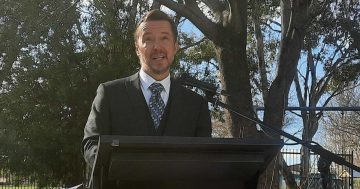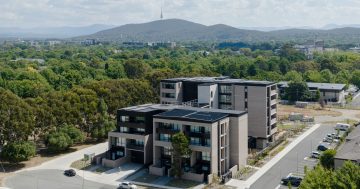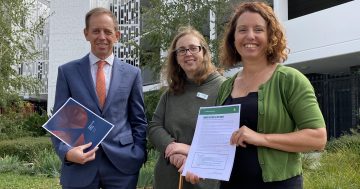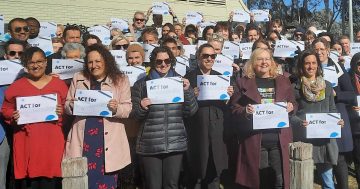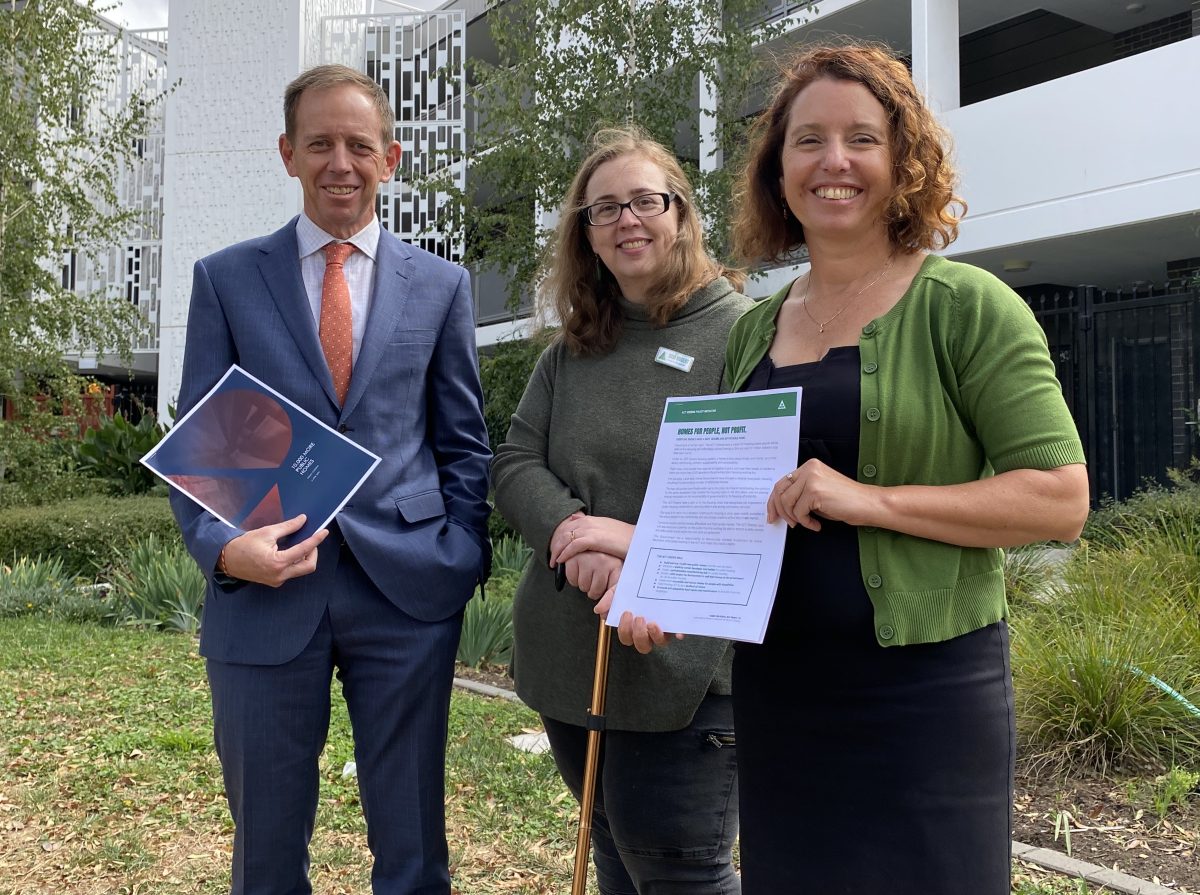
ACT Greens leader Shane Rattenbury, Brindabella candidate Sam Nugent and deputy leader Rebecca Vassarotti: the Greens’ ambitious housing plan deserves a closer look. Photo: Claire Fenwicke.
It’s pretty easy to take potshots at the ACT Greens for having pie-in-the-sky policies, such as setting up a government agency to build 10,000 new public homes over 10 years.
Throw in the $5 billion to $9 billion or so that it may cost and it’s all over, red rover.
In an election year, both Labor and the Liberals have common cause in limiting the Greens’ influence and the number of seats they might take come October, so they were both quick to attack the Greens’ plan for being unachievable and too costly.
Labor says they should know better and the Libs call them dangerous.
However, all the Greens are proposing is what state and territory governments used to do before the great retreat from public housing and what many overseas jurisdictions still do.
It’s an attempt to address the fact that the current housing market has failed to meet the needs of the increasing number of people who are locked out of buying property, are chewing through their wages renting a property, or find themselves living in their cars, couch-surfing, or sitting for years on a list for a public house that doesn’t exist.
Yes, there are all kinds of questions around the cost, the workforce and land required, and how it would fit with the private sector and the Albanese Government’s National Housing Accord.
And the chances of the Greens being in a position to implement such a policy are remote.
However, as ACTCOSS CEO Devin Bowles says, business as usual is not an option if one is serious about fixing the housing crisis.
Any notion that this is something the private sector alone can build ourselves out of is delusional. With wages now so out of step with rents and property prices, only a restored government housing sector can prevent a crash in living standards for people on fixed incomes, low and even middle-income workers.
It doesn’t matter how many homes are built if people can’t afford to live in them.
ACT Labor’s intention to significantly boost the role of community housing providers, also a Liberal policy, will provide more below-market rent dwellings, but will it be enough?
So look at the Greens’ ambitious proposal as a bundle of ideas to be considered and an ambit claim.
Would a government developer with its own workforce, no need for tenders or profit margin, hasten builds and keep costs down?
They have proposed using prefabrication, something the industry is taking seriously to rein in the soaring cost of construction.
The Greens argue that there should be enough transitional properties available to offer the often temporary shelter that people in between jobs need to stay on their feet.
But this also means giving Housing ACT more flexibility in how it manages its portfolio so tenants do not expect to have a government home or the same home for life.
The Greens also want infill policy of 80 per cent (too much), more development rights in residential zoned land (maybe), and for the Suburban Land Agency to halve the price of land it sells to Housing ACT (why not?)
They also would expect the federal government to contribute to the program.
Whether every idea is worthy or not is beside the point.
We need a shift in thinking because simply sticking to what we have been doing will only mean more of the same or worse.
Every social service and social housing lobby in the country is calling for the government to step into the yawning gap in the market that the private sector has not filled.
When it comes to budgets, it’s about choices. Billions are being spent on the inland rail boondoggle and billions more will be poured into the AUKUS submarine project despite increasing doubts about its viability, strategic purpose or eventual effectiveness.
Then there are the billions foregone in the generous tax concessions that many economists argue are at the root of Australia’s housing malaise.
Yet, when it comes to the basic right of shelter, it’s all too hard. A little more ambition would be welcome.















